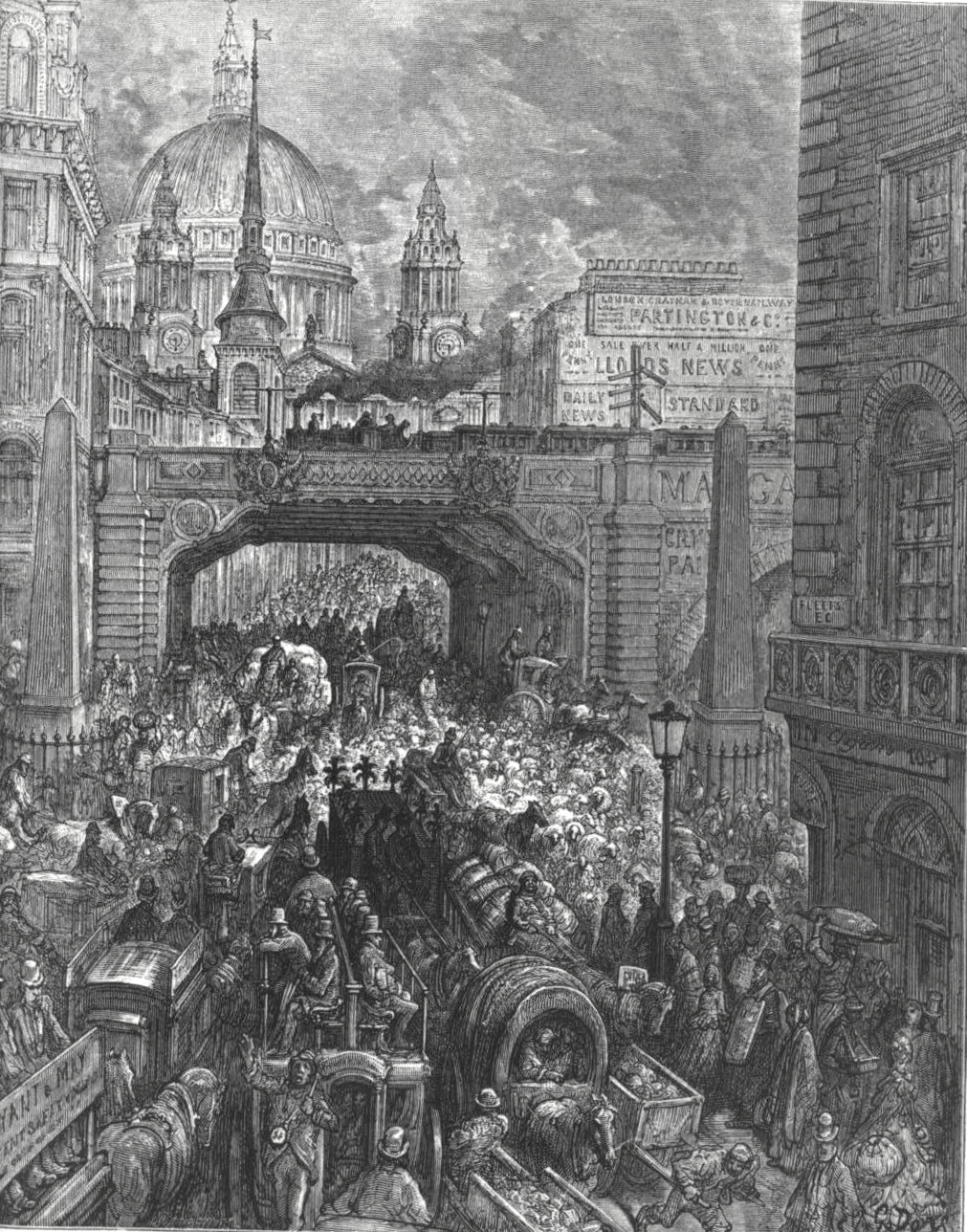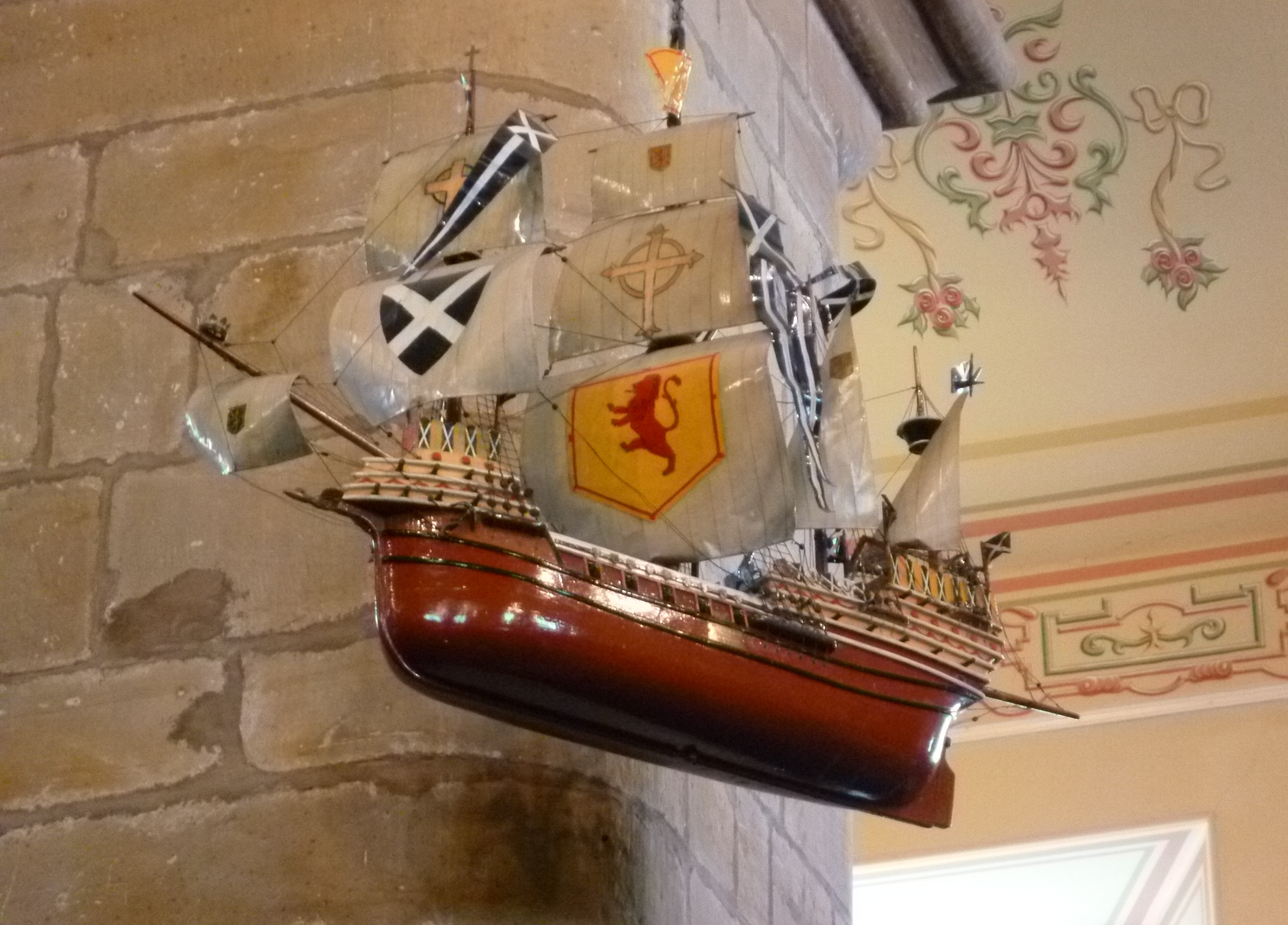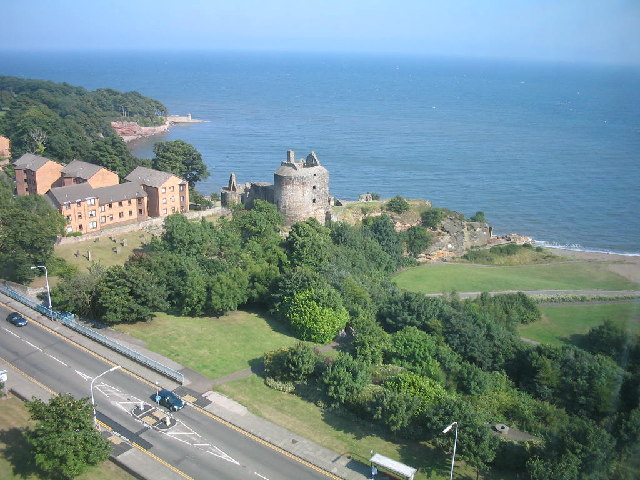|
Henry Sinclair, 4th Lord Sinclair
Henry Sinclair (died 1513) was a Scottish noble and the 4th Lord Sinclair. In '' The Scots Peerage'' by James Balfour Paul he is designated as the 3rd Lord Sinclair, but historian Roland Saint-Clair designates him the 4th Lord Sinclair and references this to an Act of the Scottish Parliament in which he was made Lord Sinclair based on his descent from his great-grandfather, Henry II Sinclair, Earl of Orkney, the first Lord Sinclair. Bernard Burke, in his a ''Genealogical and Heraldic Dictionary of the Peerage and Baronetage of the British Empire'', agrees with Roland Saint-Clair and says that Henry Sinclair was "in reality" the fourth holder of the title of Lord Sinclair. Early life He was the son of William Sinclair, 3rd Lord Sinclair and Christian Leslie, daughter of George Leslie, 1st Earl of Rothes. Immediately after the death of his father, an Act was passed by the Scottish Parliament in his favour and which recognised him as "Chief of yat blude" and willing "yarfor that ... [...More Info...] [...Related Items...] OR: [Wikipedia] [Google] [Baidu] |
Lord Sinclair
Lord Sinclair is a title in the Peerage of Scotland. According to James Balfour Paul's ''The Scots Peerage'', volume VII published in 1910, the first person to be styled Lord Sinclair was William Sinclair, 1st Earl of Caithness, William Sinclair, 3rd Earl of Orkney and 1st Earl of Caithness (died 1480). However, according to Roland Saint-Clair writing in the late 19th century, William Sinclair's father, Henry II Sinclair, Earl of Orkney, who died in 1420, is the first person recorded as Lord Sinclair by public records. In 1470, William Sinclair, 3rd Earl of Orkney, 2nd Lord Sinclair and 11th Baron of Roslin surrendered the earldom of Orkney in return for the Earl of Caithness, earldom of Caithness. He divided his estates: his eldest son from his first marriage, William Sinclair, 3rd Lord Sinclair, inherited the title of Lord Sinclair, while he left the Barony of Roslin to his eldest son from his second marriage, Oliver St Clair, 12th Baron of Roslin, Oliver, and the earldom of C ... [...More Info...] [...Related Items...] OR: [Wikipedia] [Google] [Baidu] |
Orkney
Orkney (; sco, Orkney; on, Orkneyjar; nrn, Orknøjar), also known as the Orkney Islands, is an archipelago in the Northern Isles of Scotland, situated off the north coast of the island of Great Britain. Orkney is 10 miles (16 km) north of the coast of Caithness and has about 70 islands, of which 20 are inhabited. The largest island, the Mainland, has an area of , making it the sixth-largest Scottish island and the tenth-largest island in the British Isles. Orkney’s largest settlement, and also its administrative centre, is Kirkwall. Orkney is one of the 32 council areas of Scotland, as well as a constituency of the Scottish Parliament, a lieutenancy area, and an historic county. The local council is Orkney Islands Council, one of only three councils in Scotland with a majority of elected members who are independents. The islands have been inhabited for at least years, originally occupied by Mesolithic and Neolithic tribes and then by the Picts. Orkney wa ... [...More Info...] [...Related Items...] OR: [Wikipedia] [Google] [Baidu] |
Ludgate Hill
Ludgate Hill is a street and surrounding area, on a small hill in the City of London. The street passes through the former site of Ludgate, a city gate that was demolished – along with a gaol attached to it – in 1760. The area includes St Paul's Cathedral. The modern cathedral, it has been claimed, was built on a site that – during the Roman British era of the early first millennium – was occupied by a major Roman temple, dedicated to the goddess Diana. Ludgate Hill itself is traditionally regarded as one of a trio of hills in Central London, the others being Tower Hill and Cornhill. The highest point is just north of St Paul's, at above sea level. The modern street named Ludgate Hill, which was previously a much narrower thoroughfare named Ludgate Street, runs between St Paul's Churchyard and Ludgate Circus (built in 1864), at which point it becomes Fleet Street. Description Many small alleys on Ludgate Hill were swept away in the mid 1860s to build Ludg ... [...More Info...] [...Related Items...] OR: [Wikipedia] [Google] [Baidu] |
Battle Of Flodden
The Battle of Flodden, Flodden Field, or occasionally Branxton, (Brainston Moor) was a battle fought on 9 September 1513 during the War of the League of Cambrai between the Kingdom of England and the Kingdom of Scotland, resulting in an English victory. The battle was fought near Branxton, Northumberland, Branxton in the county of Northumberland in northern England, between an invading Scots army under King James IV of Scotland, James IV and an English army commanded by the Thomas Howard, 2nd Duke of Norfolk, Earl of Surrey. In terms of troop numbers, it was the largest battle fought between the two kingdoms."The Seventy Greatest Battles of All Time". Published by Thames & Hudson Ltd. 2005. Edited by Jeremy Black. Pages 95 to 97.. After besieging and capturing several English border castles, James encamped his invading army on a commanding hilltop position at Flodden and awaited the English force which had been sent against him, declining a challenge to fight in an open field. Su ... [...More Info...] [...Related Items...] OR: [Wikipedia] [Google] [Baidu] |
Artillery
Artillery is a class of heavy military ranged weapons that launch munitions far beyond the range and power of infantry firearms. Early artillery development focused on the ability to breach defensive walls and fortifications during sieges, and led to heavy, fairly immobile siege engines. As technology improved, lighter, more mobile field artillery cannons developed for battlefield use. This development continues today; modern self-propelled artillery vehicles are highly mobile weapons of great versatility generally providing the largest share of an army's total firepower. Originally, the word "artillery" referred to any group of soldiers primarily armed with some form of manufactured weapon or armor. Since the introduction of gunpowder and cannon, "artillery" has largely meant cannons, and in contemporary usage, usually refers to shell-firing guns, howitzers, and mortars (collectively called ''barrel artillery'', ''cannon artillery'', ''gun artillery'', or - a lay ... [...More Info...] [...Related Items...] OR: [Wikipedia] [Google] [Baidu] |
Great Michael
''Michael'', popularly known as ''Great Michael'', was a carrack or great ship of the Royal Scottish Navy. She was the largest ship built by King James IV of Scotland as part of his policy of building a strong Scottish navy. She was ordered around 1505 and laid down in 1507 under the direction of Captain Sir Andrew Wood of Largo and the master shipwright Jacques Terrell, launched on 12 October 1511 and completed on 18 February 1512. She was too large to be built at any existing Scottish dockyard, so was built at the new dock at Newhaven. When ''Michael'' was launched she was the largest ship afloat, with twice the original displacement of her English contemporary ''Mary Rose,'' which was launched in 1509 and completed in 1510. The poet William Dunbar wrote of her construction: Translation fom Middle Scots: The chronicler Lindsay of Pitscottie wrote of the building of ''Michael'' that "all the woods of Fife, except Falkland wood, besides all the timber that was got ou ... [...More Info...] [...Related Items...] OR: [Wikipedia] [Google] [Baidu] |
Dysart, Fife
Dysart ( ; gd, Dìseart) is a former town and royal burgh located on the south-east coast between Kirkcaldy and West Wemyss in Fife. The town is now considered to be a suburb of Kirkcaldy. Dysart was once part of a wider estate owned by the St Clair or Sinclair family. They were responsible for gaining burgh of barony status for the town towards the end of the 15th century. The first record of the town was made in the early 13th century, its initial role being to settle civil matters between the church and landowners. During the middle of the 15th century, trade with the Low Countries began for salt and coal exportation. In the 16th and 17th centuries, trade expanded to the Baltic Countries. Dysart acquired two nicknames: "Salt Burgh" and "Little Holland" as a result. Following the sudden decline of the town's harbour caused by the closure of the Lady Blanche Pit, the town was amalgamated into the royal burgh of Kirkcaldy under an act of parliament in 1930. Urban clearance du ... [...More Info...] [...Related Items...] OR: [Wikipedia] [Google] [Baidu] |
Ravenscraig Castle
Ravenscraig Castle is a ruined castle located in Kirkcaldy which dates from around 1460. The castle is an early example of artillery defence in Scotland. History The construction of Ravenscraig Castle by the mason Henry Merlion and the master carpenter Friar Andres Lesouris was ordered by King James II (reigned 1437-1460) as a home for his wife, Mary of Guelders.Eunson, Eric ''Old Dysart and East Kirkcaldy'' p.27. The castle is considered one of the first - perhaps the very first - in Scotland to be built to withstand cannon fire and provide for artillery defence. The king was involved with the planning but, ironically, was killed in a tragic accident with a loaded cannon at the Siege of Roxburgh Castle near Floors Castle in the Scottish Borders.Lamont-Brown ''Fife in History and Legend'' pp145–146 Construction was commenced around 1460 by his widow, Mary of Guelders, as a memorial to him and as a dower house.Lamont-Brown, Raymond ''Fife in History and Legend'', p. 148. S ... [...More Info...] [...Related Items...] OR: [Wikipedia] [Google] [Baidu] |
Newburgh, Fife
Newburgh is a royal burgh and parish in Fife, Scotland, at the south shore of the Firth of Tay. The town has a population of 2,171 (in 2011),Census of Scotland 2011, Table KS101SC – Usually Resident Population, publ. by National Records of Scotland. Web site http://www.scotlandscensus.gov.uk/ retrieved March 2016. See “Standard Outputs”, Table KS101SC, Area type: Civil Parish 1930 which constitutes a 10% increase since 1901 when the population was counted at 1,904 persons. The town has a long history of fishing and industrial heritage. Lindores Abbey lies at the eastern edge of the town. History In 1266 Newburgh was granted burgh status by King Alexander III of Scotland, as a burgh belonging to the Abbot of Lindores. In 1600, Newburgh was given to Patrick Leslie, 1st Lord Lindores, son of the Earl of Rothes. In 1631, Newburgh was made a Royal Burgh by King Charles I. Since the Second World War many new houses have been built in Newburgh but the population has only ... [...More Info...] [...Related Items...] OR: [Wikipedia] [Google] [Baidu] |
Sasine
Sasine in Scots law is the delivery of feudal property, typically land. Feudal property means immovable property, and includes everything that naturally goes with the property. For land, that would include such things as buildings, trees, and underground minerals. A superior (e.g., a heritor) might authorise his agent or factor to give possession of his property to someone else through a document known as a "precept of sasine". One of the earliest records in Scotland is from 1248 when Sir Malcolm, son of the then Earl of Lennox, ‘conferred full Sasine’ of certain lands at Strathblane to Sir David Graham. Over time, sasine came to be used in common speech as a reference to the deed or document recording the transfer, rather than to the transfer itself. Hence phrases such as "to give sasines", "to deliver sasines", "to receive sasines", "to take sasines". Alternative spellings include: ''seizin'', ''seisin'', ''sasin'', ''seasin'', ''sasing'', ''seasing'', ''sesin'', ''seasi ... [...More Info...] [...Related Items...] OR: [Wikipedia] [Google] [Baidu] |
Annulment
Annulment is a legal procedure within secular and religious legal systems for declaring a marriage null and void. Unlike divorce, it is usually retroactive, meaning that an annulled marriage is considered to be invalid from the beginning almost as if it had never taken place (though some jurisdictions provide that the marriage is only void from the date of the annulment; for example, this is the case in section 12 of the Matrimonial Causes Act 1973 in England and Wales). In legal terminology, an annulment makes a void marriage or a voidable marriage null.John L. Esposito (2002), Women in Muslim Family Law, Syracuse University Press, , pp. 33–34 Void vs voidable marriage A difference exists between a ''void marriage'' and a ''voidable marriage''. A void marriage is a marriage that was not legally valid under the laws of the jurisdiction where the marriage occurred, and is void ''ab initio''. Although the marriage is void as a matter of law, in some jurisdictions an annulment ... [...More Info...] [...Related Items...] OR: [Wikipedia] [Google] [Baidu] |
Kirkwall Castle
Kirkwall Castle, also known as King's Castle, was located in Kirkwall, the main settlement in the Orkney Islands of Scotland. Built in the 14th century, it was deliberately destroyed in 1614. The last ruins were cleared in the 19th century. The castle was located around the corner of Broad Street and Castle Street in the centre of Kirkwall. History In the 14th century, Henry Sinclair, Earl of Orkney, (c. 1345 – c. 1400) held the Earldom of Orkney from King Haakon VI of Norway. Sinclair built the castle at Kirkwall soon after being granted the Earldom in 1379. In the early 17th century Patrick Stewart, 2nd Earl of Orkney, feuded with Laurence Bruce, Sheriff of Shetland. Stewart was arrested in 1610, and in May 1614 his son, Robert, rebelled against King James VI. Robert and his supporters occupied Kirkwall Castle, along with the Bishop's and Earl's Palaces, and St Magnus Cathedral. In August, George Sinclair, 5th Earl of Caithness led royal troops against the rebels, and Kirkwa ... [...More Info...] [...Related Items...] OR: [Wikipedia] [Google] [Baidu] |







